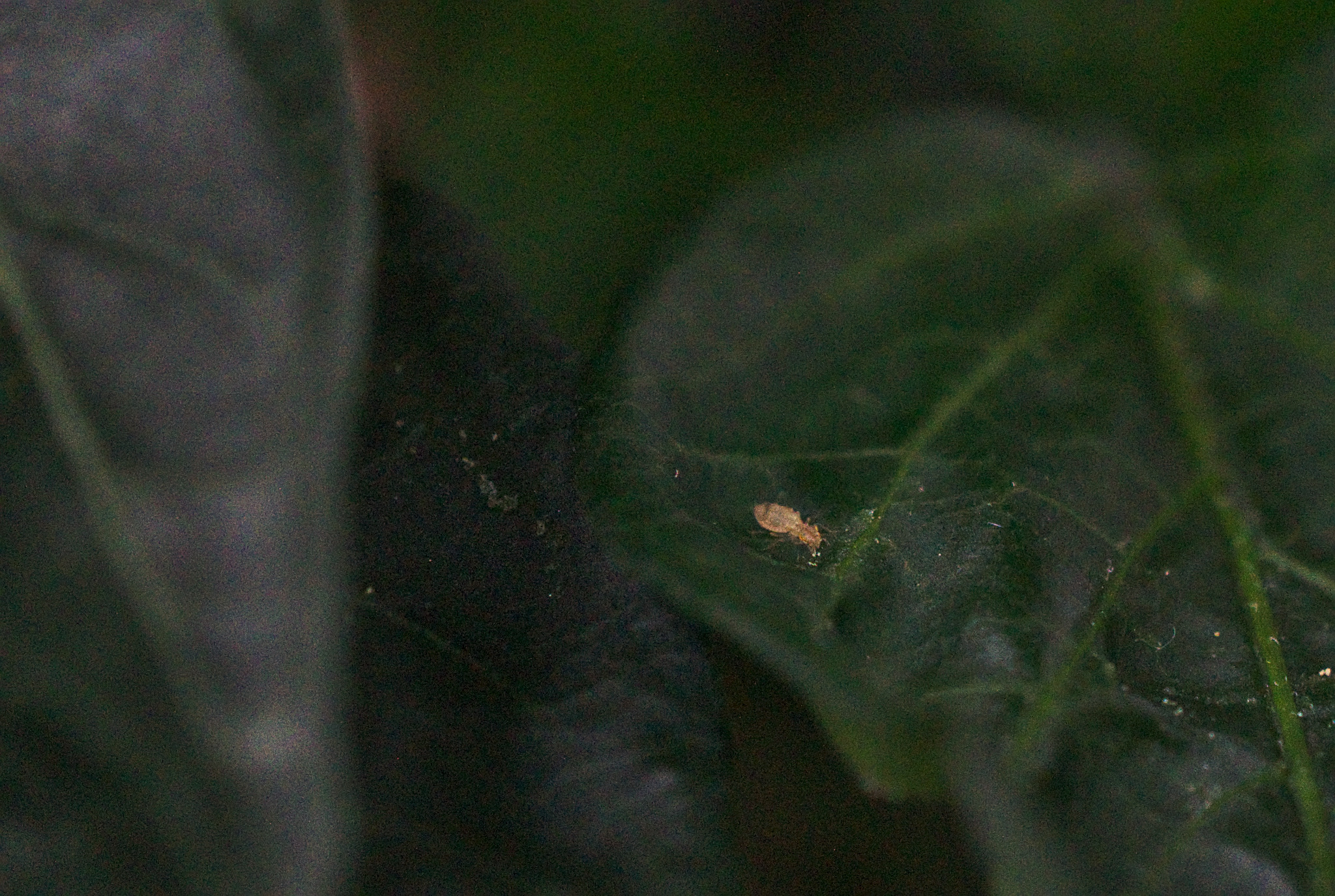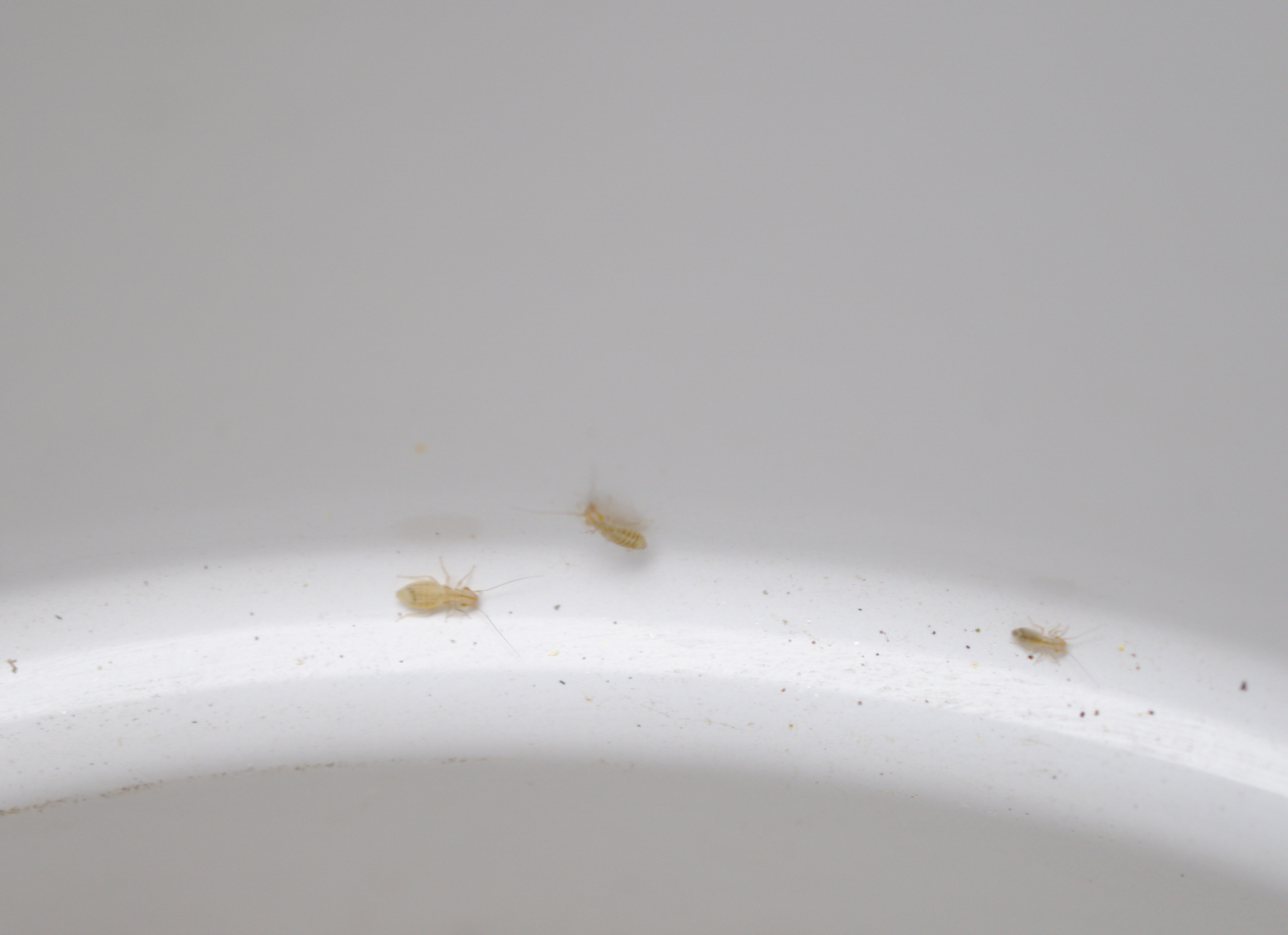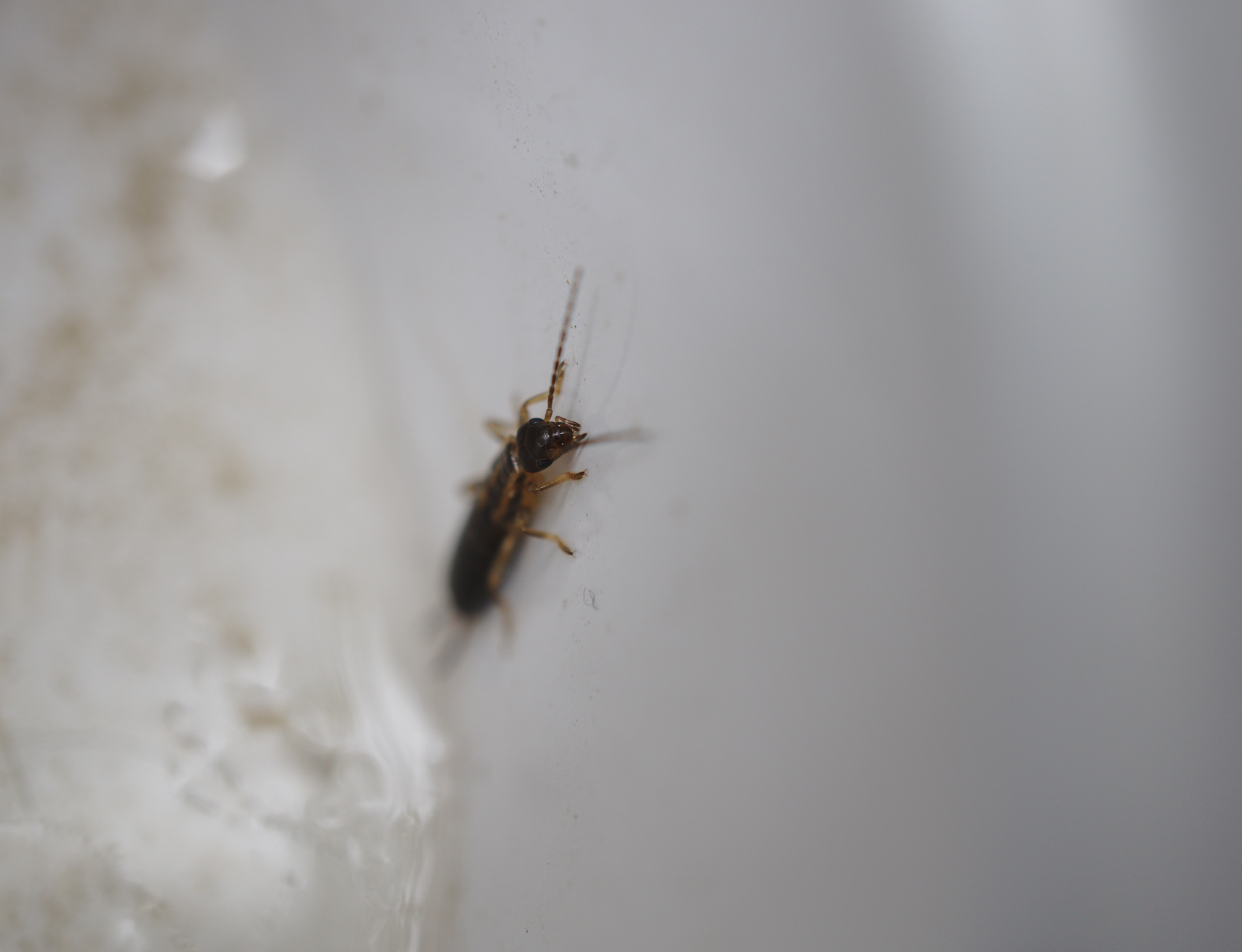Hi
In a small balcony greenhouse I have a tomato plant and an Ethiopian brown. The latter has been there for around a month now, spent its days in a grow tent indoors before. It had wickedly upwards curving leafs indoors, may have had to do with too moist soil too often. It doesn't anymore but at the start of the week I noticed these small tan things running around on its leaves. Today there were more of them. Don't see them on the tomato leaves.
The greenhouse has direct sun between 14.30 and 17.30 in the afternoons (when there is sun). For this last month its relative humidity has varied between 35% and 70%, temps between 29C and 12C (Swedish summer). I drilled a couple of decimeter-diameter holes in the greenhouse toward the top sides as I cannot open its top for ventilation (the cats jump up and lie on top of it). The bottom is a "grille" or whatever it is called, anyway there's theoretically some air throughput. It has stopped curling its leaves, sits in a 6L square container with not mostly-peat-and-twigs-and-stones-soil and is producing rather lovely looking flowers (slightly white-tan) that produce pollen but unfortunately all fall off so far. (My collague with a house and garden started planting late, got too many, put some hot pepper plants out in the open in the garden and some in his greenhouse, pH8 water, and most of his plants are producing pods by now..well lets not get bitter, haha, I've no experience with the "outdoors" and know indoors can be hard. Apparently partially shaded balconies too)
What's this? Most "thrip" photos I see seem to show more elongated things but I'm not sure what else these might be. Will now spray the leaves with my soap spray.
(Sorry for the somewhat bad photo, I work during the day and this evening is cloudy. I know these aren't aphids anyway, at least they don't look or act like the clumps of aphids I got indoors once, they aren't green and stationary and so small, these)

In a small balcony greenhouse I have a tomato plant and an Ethiopian brown. The latter has been there for around a month now, spent its days in a grow tent indoors before. It had wickedly upwards curving leafs indoors, may have had to do with too moist soil too often. It doesn't anymore but at the start of the week I noticed these small tan things running around on its leaves. Today there were more of them. Don't see them on the tomato leaves.
The greenhouse has direct sun between 14.30 and 17.30 in the afternoons (when there is sun). For this last month its relative humidity has varied between 35% and 70%, temps between 29C and 12C (Swedish summer). I drilled a couple of decimeter-diameter holes in the greenhouse toward the top sides as I cannot open its top for ventilation (the cats jump up and lie on top of it). The bottom is a "grille" or whatever it is called, anyway there's theoretically some air throughput. It has stopped curling its leaves, sits in a 6L square container with not mostly-peat-and-twigs-and-stones-soil and is producing rather lovely looking flowers (slightly white-tan) that produce pollen but unfortunately all fall off so far. (My collague with a house and garden started planting late, got too many, put some hot pepper plants out in the open in the garden and some in his greenhouse, pH8 water, and most of his plants are producing pods by now..well lets not get bitter, haha, I've no experience with the "outdoors" and know indoors can be hard. Apparently partially shaded balconies too)
What's this? Most "thrip" photos I see seem to show more elongated things but I'm not sure what else these might be. Will now spray the leaves with my soap spray.
(Sorry for the somewhat bad photo, I work during the day and this evening is cloudy. I know these aren't aphids anyway, at least they don't look or act like the clumps of aphids I got indoors once, they aren't green and stationary and so small, these)



